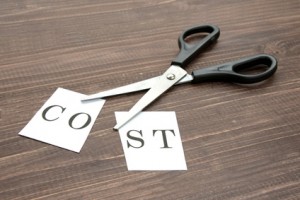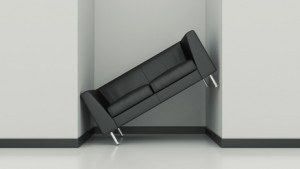Expense recoveries (aka reimbursements or pass-throughs) serve as a customary ingredient in leases for non-residential property. In part 1 of this article, I discussed some of the typical ways such an arrangement might play out.
The Simple Pass-Through
 In a single-tenant property the tenant may be expected to pay all or a portion of certain operating expenses, such as property taxes and insurance, in addition to its base rent. If the tenant is obliged to pay just a portion of the expense, that amount is the excess over what is called an “expense stop.” Let’s say the property taxes are $12,000 and the lease requires the tenant to pay the excess over an expense stop of $4,000. The tenant would have to pay $8,000.
In a single-tenant property the tenant may be expected to pay all or a portion of certain operating expenses, such as property taxes and insurance, in addition to its base rent. If the tenant is obliged to pay just a portion of the expense, that amount is the excess over what is called an “expense stop.” Let’s say the property taxes are $12,000 and the lease requires the tenant to pay the excess over an expense stop of $4,000. The tenant would have to pay $8,000.
property tax expense — expense stop = expense reimbursement
$12,000 — $4,000 = $8,000 expense reimbursement
If this were a multi-tenant property, the recoverable amount would typically be pro-rated among the tenants—that is, it would be divided up according to the square footage of each tenant’s space in relation to the whole.
Base-Year Expense Stop

A variation on the expense-stop theme is the “base year expense stop.” In this scenario, the parties agree that the landlord will pay the full amount of the recoverable expenses for the first year, and in future years the tenant will pay any increase over that base.
An arrangement like this certainly seems straightforward enough, but prospective tenants sometimes view it with a jaundiced eye. What if the landlord tries to maneuver the timing of base year expenses in order to minimize them? Then the excess in subsequent years would be artificially inflated. If that’s a concern, then perhaps the tenant would prefer a pre-defined expense stop, as in the earlier example.
Keep in mind that the tenant does not pay these expenses directly to the original source of the bill. The landlord pays the tab and passes the appropriate charge through to the tenant, hence the term “expense recovery” or “reimbursement.”
Common Area Maintenance
 Not every property will fit into a nice, neat, divisible mold. Take, for example, an office building or a larger shopping center. Properties like these may include areas such as lobbies, hallways, elevators, escalators, rest rooms, and parking lots—areas provided for the benefit of all the tenants, as well as for the public served by those tenants (i.e., their customers or clients). In addition, there may be services that the landlord provides for everyone’s benefit, such as security, trash removal, and janitorial. How does the property owner pass these costs through to tenants?
Not every property will fit into a nice, neat, divisible mold. Take, for example, an office building or a larger shopping center. Properties like these may include areas such as lobbies, hallways, elevators, escalators, rest rooms, and parking lots—areas provided for the benefit of all the tenants, as well as for the public served by those tenants (i.e., their customers or clients). In addition, there may be services that the landlord provides for everyone’s benefit, such as security, trash removal, and janitorial. How does the property owner pass these costs through to tenants?
One approach is to bundle up the cost of common services into an item called CAM— Common Area Maintenance charges— and to pass that charge through based on square footage, just as one might pass through a property’s tax expense. Let’s take a tenant who occupies 2,000 square feet out of a total of 10,000; and let’s also say that we have identified $1,000 in total CAM charges for a given time period.
pro rata share of space x CAM charge
= expense reimbursement
20% x $1,000 = expense reimbursement
= $200 expense reimbursement
This method may be fine in situations where the CAM charges are based mainly on services, but the property owner might be less than satisfied with this approach if the property has a significant amount of physical area devoted to common use. Why?
Usable vs. Rentable

Perhaps the answer lies in that we mean by “space.” Let’s pause for two definitions:
usable square feet (usf): The amount of space physically occupied by a tenant.
rentable square feet (rsf): The amount of space on which the tenant pays rent.
The common area represents space from which the tenants benefit, but that space is not part of their private, usable square footage. The common space is being used for lobbies and hallways and rest rooms, so it’s not available to lease out and earn rental income. This would not appear to be an ideal business plan for the landlord. Should the landlord absorb the loss? Is there an alternative?
The answer, and more, in our final installment about expense reimbursements.
—-Frank Gallinelli
Want to learn more? Visit learn.realdata.com
####
Your time and your investment capital are too valuable to risk on a do-it-yourself investment spreadsheet. For more than 30 years, RealData has provided the best and most reliable real estate investment software to help you make intelligent investment decisions and to create presentations you can confidently show to lenders, clients, and equity partners. Find out more at www.realdata.com.
Copyright 2016, Frank Gallinelli and RealData® Inc. All Rights Reserved

This is good stuff right here! This is great information to know. Please keep going. I will look forward to other posts. Thank you Frank!!
Great article! Very informative, thank you for sharing this information.